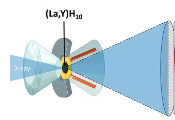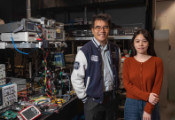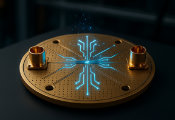€10M Project Eyes 100 Qubit Diamond Quantum Computer
November 12, 2024 -- A €10m consortium funded by the European Commission and supported by the Quantum Flagship is using diamond and silicon carbide to build quantum computers and quantum simulators that can run at room temperature.
The SPINUS project is developing quantum simulators with more than 50 qubits and quantum computers with over ten qubits, the team expects that their research will provide a strategy to scale up to over 1000 and 100 qubits, respectively, within five years post-project.
The project, which includes key industrial partner Quantum Brilliance, is developing a novel modular strategy to build scalable diamond-based quantum computers, along with novel electrical readout techniques.
Like several teams across Europe, SPINUS is exploiting the nitrogen vacancies in artificial diamonds to make programmable quantum bits or qubits. This approach has the advantage that it requires no extreme cooling and works at room temperature and is the focus of a €20m EU project to develop a portable quantum computer that also includes Quantum Brilliance.
“These are not the type of diamonds you’d find in a ring; they’re synthetic, specially engineered for quantum technologies,” said Project coordinator Martin Koppenhöfer.
“In natural diamonds, such imperfections occur randomly, but in our ultra-pure synthetic crystals, which are lab-grown in a matter of days to weeks, we can control the amount and position of the NV centres. This creates a unique setup in the diamond’s atomic structure that has special properties for quantum computing. The NV centres behave like tiny trapped atoms where electrons and nearby nuclear spins can be controlled. This allows us to store and process quantum data in more efficient ways than on conventional computers.”
In addition to room-temperature operation, spin defects in diamond can store quantum information over very long times compared with other architectures for quantum computing such as superconducting qubits, and they can be highly miniaturised.
“Making a quantum simulator with more than 50 qubits and a room-temperature quantum computer opens the door to scaling up to a higher number of qubits, like 100 or 1000, which would be a game-changer for areas like cryptography, AI, and materials science. This capability would allow scientists to discover life-saving drugs faster, solve hard optimisation problems, or develop energy-saving technologies more efficiently,” says Koppenhöfer.
The diamond qubit project runs to 2027 and is coordinated by the Fraunhofer Institute for Applied Solid State Physics IAF with Universities of Ulm and Stuttgart as well as the Forschungszentrum Jülich and Quantum Brilliance GmbH in Germany, Hasselt University in Belgium, Linköping University in Sweden, the Technical University of Denmark, Wigner Research Center for Physics in Hungary, Bruno Kessler Foundation in Italy, Delft University of Technology in the Netherlands, and AMIRES in the Czech Republic.




































